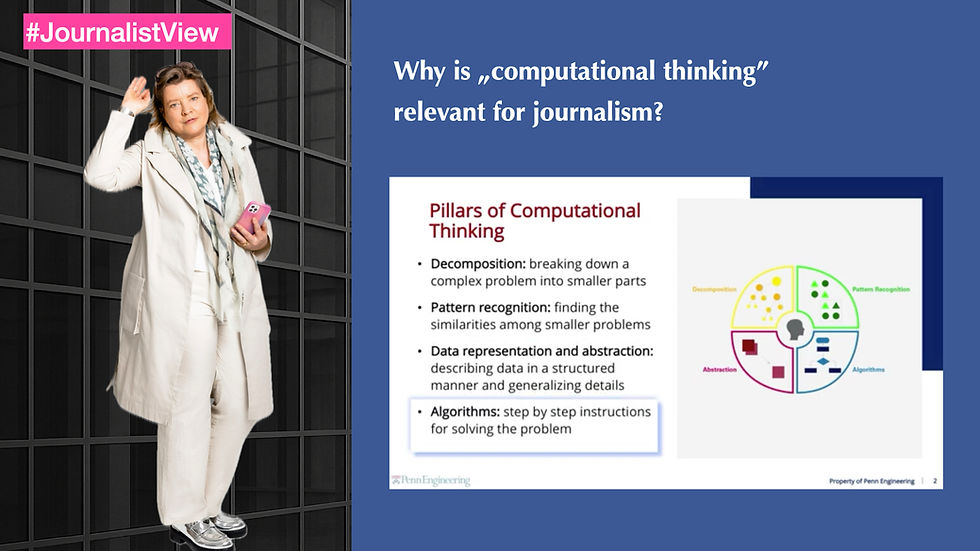The importance of "computational thinking" in modern journalism
- Now Age Storytelling team

- Aug 3
- 1 min read

We're often asked: How can I apply generative AI in journalism or education with real added value?
Our answer is: Apply computational thinking to the tasks you want to solve with AI.
Computational thinking goes far beyond programming. It's a method for systematically understanding and solving complex problems in the digital sphere.
We work primarily with four principles:
Decomposition, 2. Pattern recognition, 3. Abstraction, and 4. Algorithmic thinking.
Let's take a local journalism topic close to people's daily lives: urban mobility.
First, we break it down into sub-problems: Traffic flow, safety on school routes, accessibility of peripheral areas.
Next, we identify patterns: Typical bottlenecks, rush hours, or social inequalities in transport usage.
We don't leave these data patterns isolated: We abstract meaningful categories from individual data points, creating visual structures and paradigmatic narratives.
Finally, we construct algorithmic thinking models: "What-if" scenarios, simulated action options, and individual solutions for citizens – for instance, how to make daily school routes safer or distribute parking spaces more equitably and intelligently.
At each step, we leverage AI support while controlling the results and weaving them into a coherent story.
When we use computational thinking for journalistic stories, we aim to unlock complexity and create orientation through recognizable patterns.
We work with thinking methods from computer science and statistics that underlie large language models.
Computational thinking in journalism opens new possibilities for precise, transparent, and comprehensible reporting – with new tools, but a proven goal:
Creating a truth-capable information environment where people can make well-informed decisions.









Comments